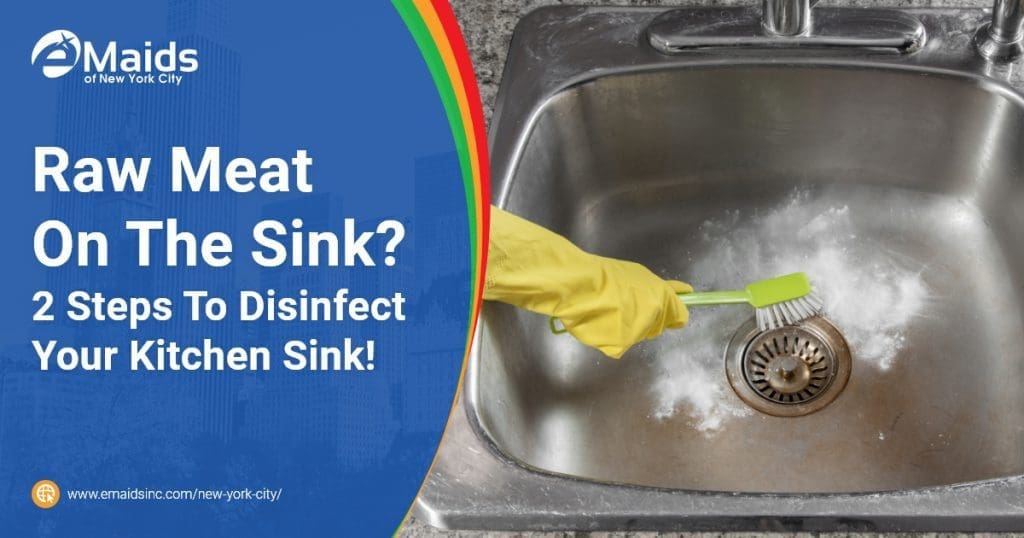Safe and delicious meals are crucial in healthy homes. You can't afford food poisoning or infections by E.coli or Salmonella, so you handle raw food with extra care. However, when it comes to cleaning the kitchen after cooking, some questions might come up.
Have you ever wondered if you're doing enough to prevent disease? Are you cleaning after your meals properly? If you want to be as safe as possible in the kitchen, we'll show you how to disinfect your sink and your kitchen after raw meat in two steps, but first a tip.
Beware of cross-contamination: Don't wash raw meat!
Although it might seem like a precaution, you could be spreading bacteria in the kitchen by washing meat and poultry. Don't worry; good cooking is enough. Also, use a separate cutting board for raw proteins.
Now that you cooked your food in the safest way possible, it's time to leave the kitchen disinfected and ready for your next meal.
Step #1: Clean and disinfect the sink
Before disinfection, clean your kitchen sink with warm, soapy water. You can use a clean, damp sponge or cloth. Scrub the surface in the direction of the grain if it's a stainless steel sink and rinse with cold water.
Then, it's time to get rid of bacteria. Here are two ways you can disinfect your kitchen sink with comparable results. Whichever you choose is a massive improvement over solely washing the sink.
Method #1: Bleach solution
No one can deny bleach is an effective chemical to disinfect your kitchen—even though it is harsh.
If you choose to go this route, make a bleach solution with one tablespoon of bleach per gallon of water to turn this powerful chemical into a safer and more manageable cleaning solution.
To disinfect your sink, dampen a clean sponge in your bleach solution and scrub the sink in the direction of the grain. Let the sink dry by itself.
Method #2: Vinegar and hydrogen peroxide
If you don't want to be near harsh chemicals like bleach, you can make a green alternative in minutes. Hydrogen peroxide and vinegar sanitize nicely, but you'll get better results if they work one after the other. Remember, use them in separate containers, or they can react.
Hydrogen peroxide works as is, but if you want to use it in a spray, it would only work if you had a dark container—otherwise, it might lose its sanitizing properties.
Mix half white vinegar with half water in another container for your second solution. Just spray peroxide and then the vinegar solution after cleaning. Any smells from the vinegar solution will fade away in minutes.
Step #2: Disinfect the rest of your kitchen
It's essential you also clean the surrounding spots where you cooked. After cleaning, you also need to disinfect, but don't use bleach on your counters; try the already mentioned vinegar and peroxide sprays.
If you have particularly dark cabinets and don't want to fade the color, 3% peroxide is usually safe, but you can dip a cloth in the peroxide and spot-test on a hidden place. If it doesn't agree with your wood finish, stick to the vinegar solution or a proven disinfectant.
Do you want to keep your whole kitchen spotless?
If you're fond of cooking but feel like you live in a neverending mess, get professional cleaning services at eMaids of NYC. Our cleaners are background-checked and thoroughly trained to be the best in the business. Book right now!

